SaaS companies need to invest a lot of effort into user adoption.
That’s because a piece of software is often a complex product with many elements and features to discover and learn about, as well as many benefits for its users.
But to get to those benefits, customers first need to use the product for a certain period of time and become accustomed to it.
This is where SaaS companies can shine in their efforts to improve user adoption. With specific strategies, they can significantly increase the number of users.
Curious to know more about these strategies?
Let’s start with the first one.
Define Your User Activation Points
Acquiring new users is crucial for any SaaS company. After all, without new users, there’s no increase in revenue or progress for the company.
However, getting new users is only the first step toward growing your business.
You need to show them the value of your product and make them realize they made the right decision by becoming a user.
How can you do that? By actively engaging them to use the key features of your product.
According to Dave McClure’s Pirate Metrics, activation is one of the five critical steps to business success.
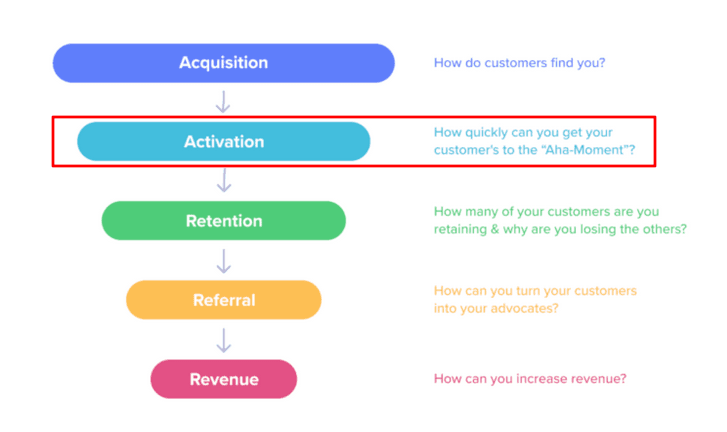
Source: thewayofdamasio
As you can see, activation leads to retention of the users, turning them into your advocates in the referral stage, and ultimately increasing your revenue.
For all of that to happen, you should define your user activation points and guide your customers through them.
Activation points can be simple actions that your users take, small milestones showing them progress and introducing them to the product.
For example, the analytics software ClearBrain has a simple three-step activation process that requires engagement from the user, but it isn’t too overwhelming.
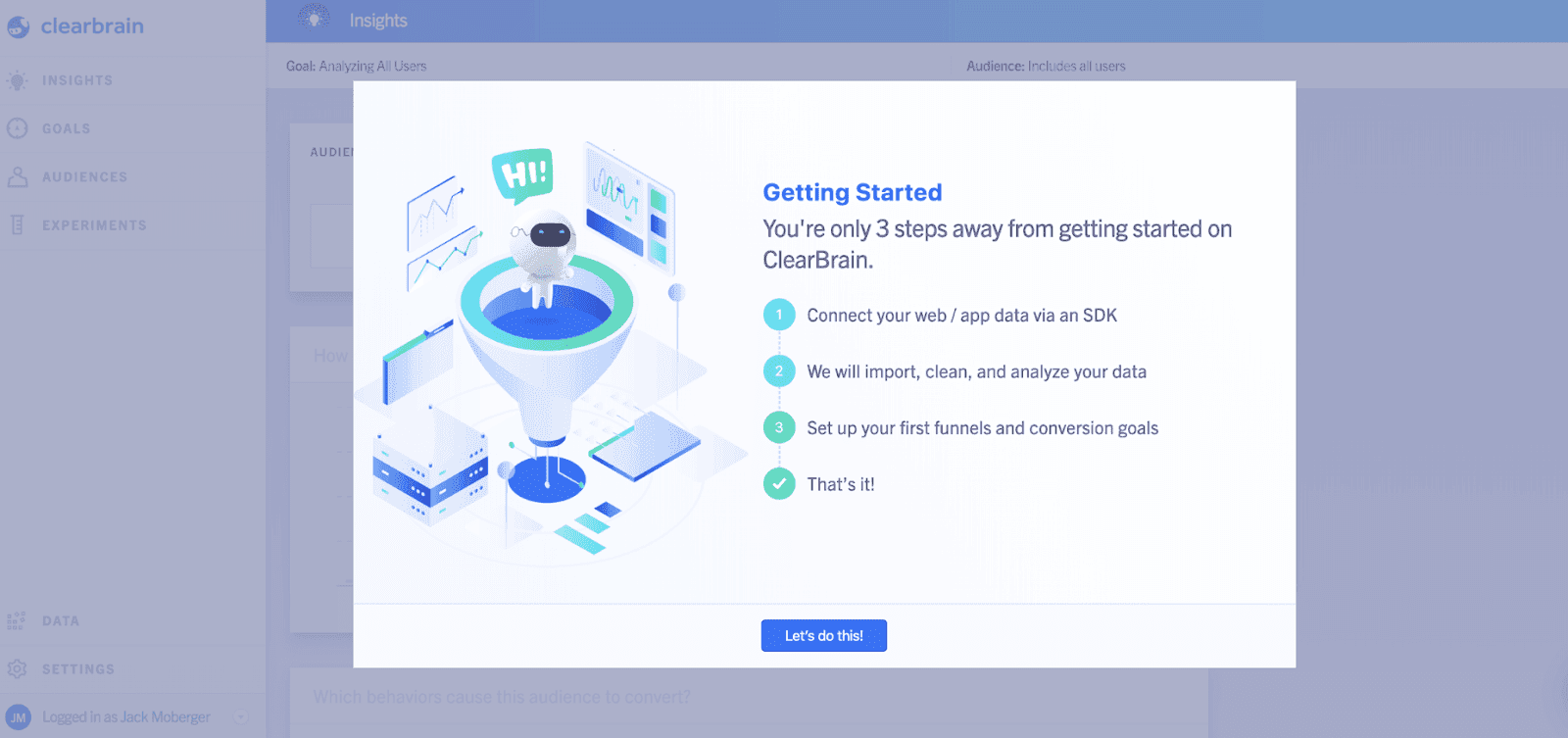
Source: GoodUX
As you can see, users are prompted to connect their data and set up their first funnels and conversion goals.
A user should also be able to see the value of your product through activation points.
You can show them that by creating a walkthrough guide in the form of a checklist with actions that users need to perform.
Those actions should highlight the main features of your product. For instance, take a look at Evernote’s checklist below.
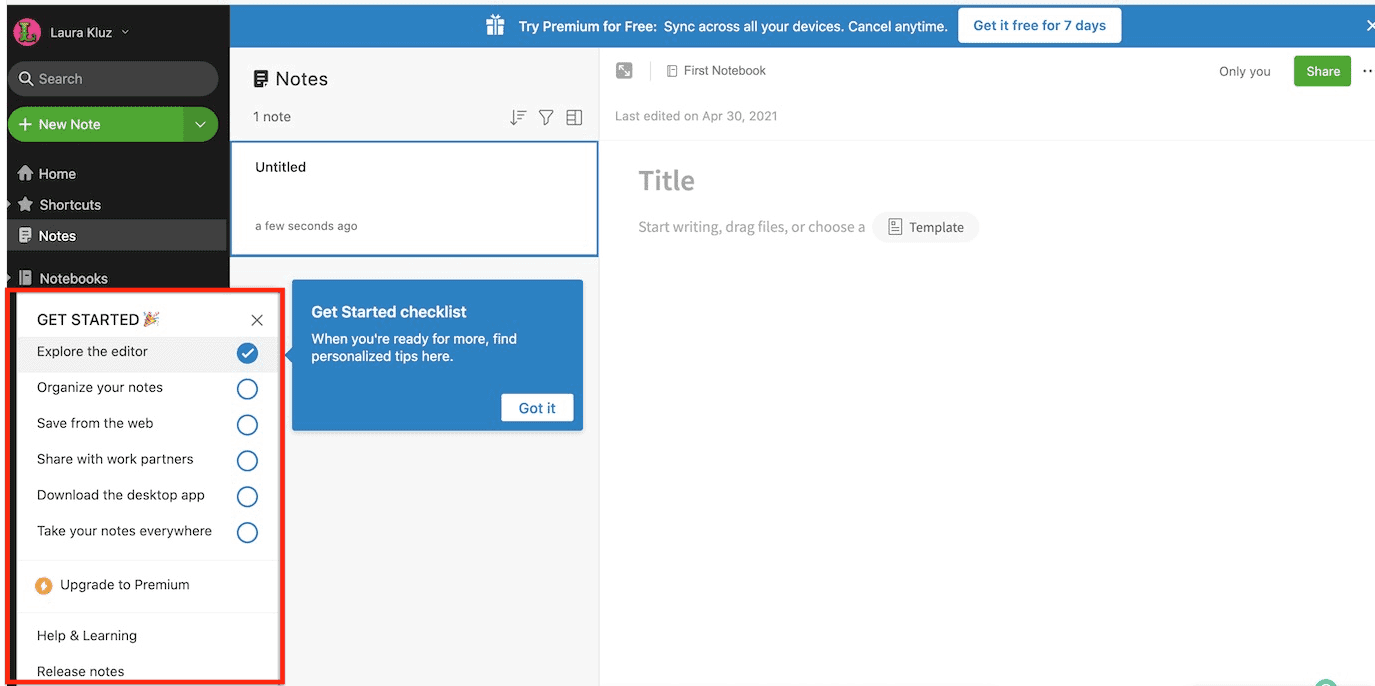
Source: ProductLed
It encourages users to explore the editor, organize notes, share their work, etc.
Those are all Evernote’s essential features, and guiding new users through them effectively shows them how they work and what value they can get from them.
Also, by guiding your users through activation points, you can bring them to the “Aha!” moment more quickly, where they realize the benefit of your product.
Once they experience that, they’re well on their way to fully adopting your product.
In summary, defining the activation points and guiding your users through them will encourage them to start actively using your product and try out its main features.
Offer a Free Trial of Your Product
You can have an amazing marketing team that comes up with innovative and persuasive ways to sell your product, but marketing might not be enough to sway all potential users.
SaaS businesses tend to offer their products or services on a subscription-based model.
For users, that means they have to commit to paying regularly, and some of them can be reluctant to do that.
That’s why you can offer them a taste of what your product is all about with a free trial.
A free trial is an excellent way for users to try out a new product without commitment. According to a survey by PYMNTS, they often become paying users after the free trial period ends.

Source: Archbee
Furthermore, since converting the free trial users to paying customers is in your best interest, you should do as much as possible to present your product in its full glory during the free trial period.
How? By giving your users access to most of the product features, if not all.
That’s also what Stephen Hetzel, co-founder of the bidding software BidPrime, advises.
He explains what his company did when they realized their product presentations to the customers by phone or in person weren’t yielding satisfactory results.
They shifted to offering free trials.
We decided to stop telling prospects how great our service is and start showing them instead.
They included every paid feature except personalized support usually provided by their account managers and witnessed much greater user adoption.
Xero, an accounting software solution, does the same, as you can see below.

Source: Xero
If you think about it, if your goal is to increase user adoption, it makes perfect sense to offer your product’s main features for free for a limited time.
That way, users can explore what your product offers and know exactly what they can expect if they start paying for it. There aren’t any unpleasant surprises.
Also, they learn how to use it in the free trial period, which makes it easier for them to adopt it.
And for your company, there isn’t much risk even if some users opt out after a free trial.
The benefits of improving user adoption with that method are far greater than the cost of offering a product for free for a few weeks.
Optimize Your User Onboarding Process
No matter how fantastic your product is, if your users don’t know how to use it from the start, they might leave it and never return.
That’s why you should create a great user onboarding process that will help your customers get acquainted with your product and its features and make it easier for them to adopt it.
The onboarding process covers your users’ journey from the first sign-up to the first use, including the activation points we’ve mentioned in the earlier section.
To improve user adoption, you want to ensure that the journey is as smooth as possible.
Keep in mind that the users might not have the patience to explore your product and learn on their own.
According to research by Localytics, every year between 20 and 25% of users abandon an app after only one use.
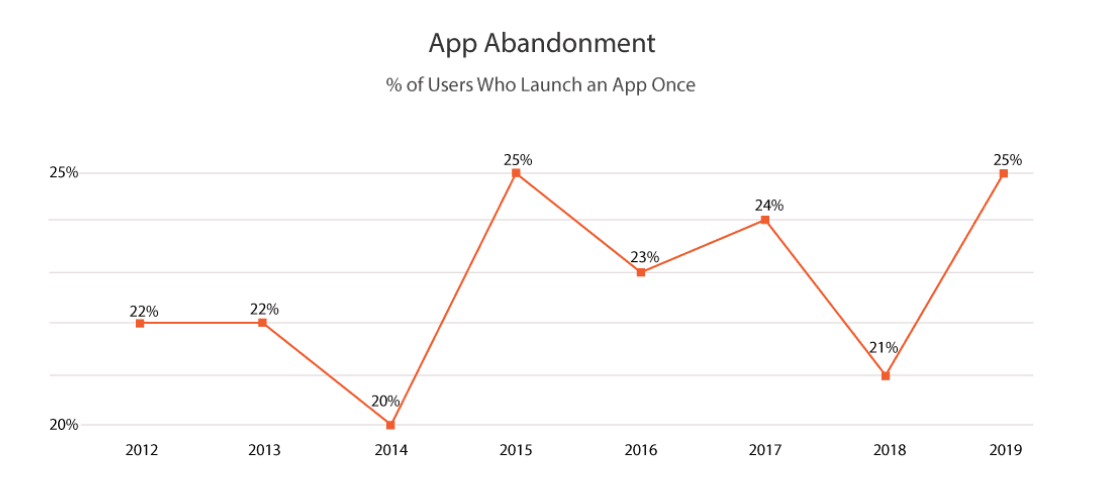
Source: Upland
Therefore, if you want to minimize the risk of every fourth or fifth user ditching your product that soon, you should provide them with a streamlined onboarding process.
Of course, users often have different needs, backgrounds, knowledge, etc. In short, they don’t all respond the same way to one process.
The remedy for that is to combine methods in your onboarding process. For example, you can use tooltips to give contextual information about specific features.
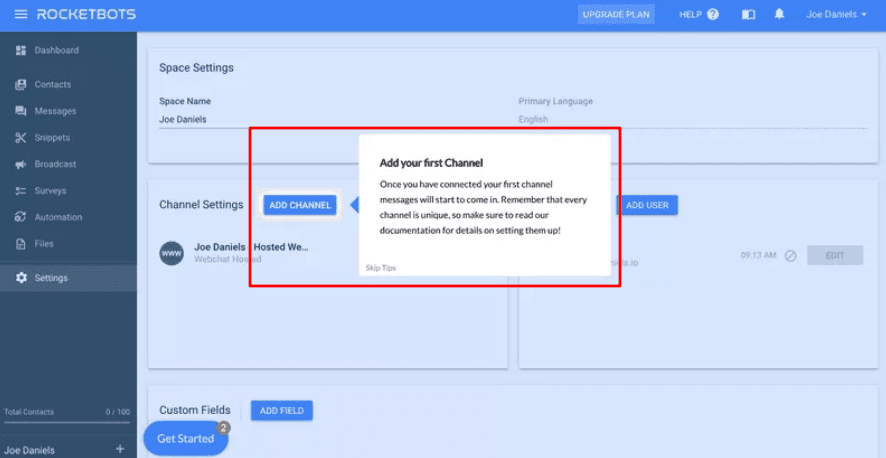
Source: Userpilot
A tooltip is essentially a short instructional text appearing when a user hovers over a product element or clicks an icon for more information.
In the example above, you can see how Rocketbots, today known as Respond.io, used a tooltip in their onboarding process.
It’s a platform that brings multiple messaging tools in one place, so the user needs to add their first tool or, in this case, “channel”.
And as you can see, the tooltip is there to help explain the process and offer additional advice.
However, there are many more ways to optimize an onboarding process. One of them is having detailed documentation where users can learn about your product in different ways.
For instance, ChartHop created its documentation in Archbee, a product documentation platform, using annotated visuals to explain the features to its users.
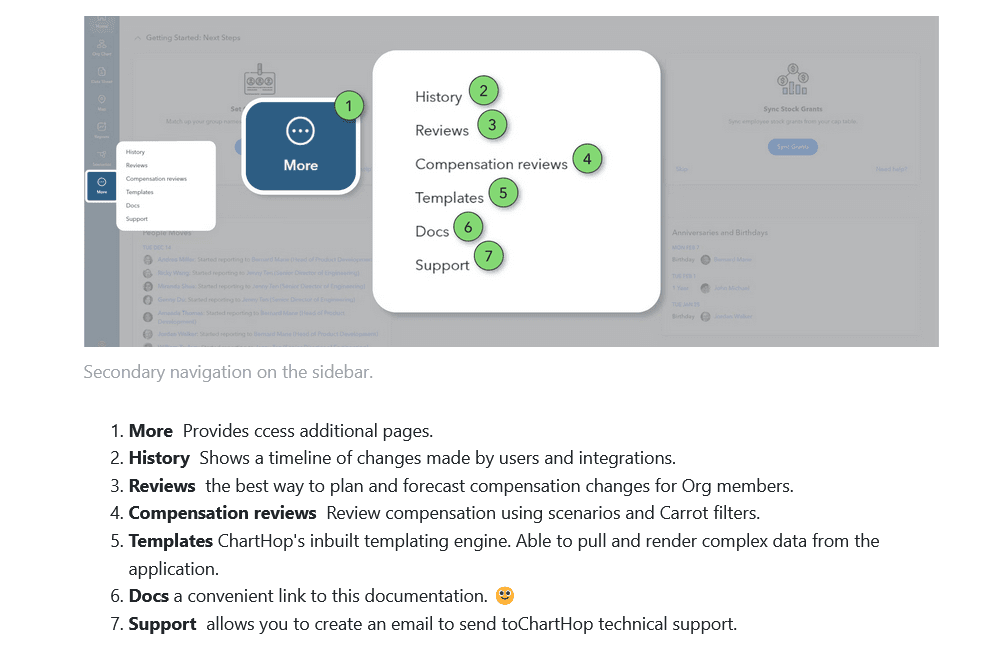
Source: ChartHop
On the other hand, some users might prefer video materials.
Archbee also supports adding video to product documentation, visible in the example from ChartHop below.
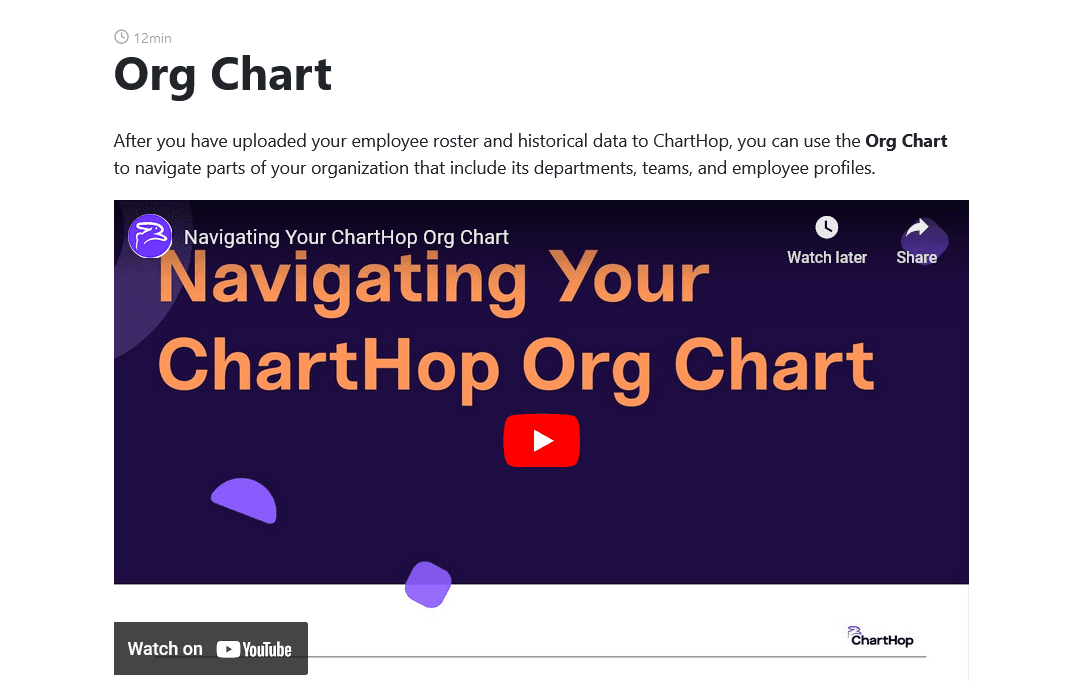
Source: ChartHop
As you can see, there isn’t one perfect way to onboard your users.
However, creating a streamlined process and providing your customers with easy-to-use materials will contribute to them gradually warming up to your product and discovering what it can do.
And that’s a promising sign that they are likely to become long-time users.
Keep Your Users Engaged After the Initial Onboarding
Although acquiring new customers is essential for any business, retaining existing ones isn’t any less important.
After all, any SaaS company wants to have a base of loyal customers they can count on.
One of the reasons is undoubtedly financial. According to the Harvard Business Review, many studies focus on the difference between the cost of attracting new customers and the cost of retaining existing ones.
And depending on the study, the former can be five to 25 times more expensive.
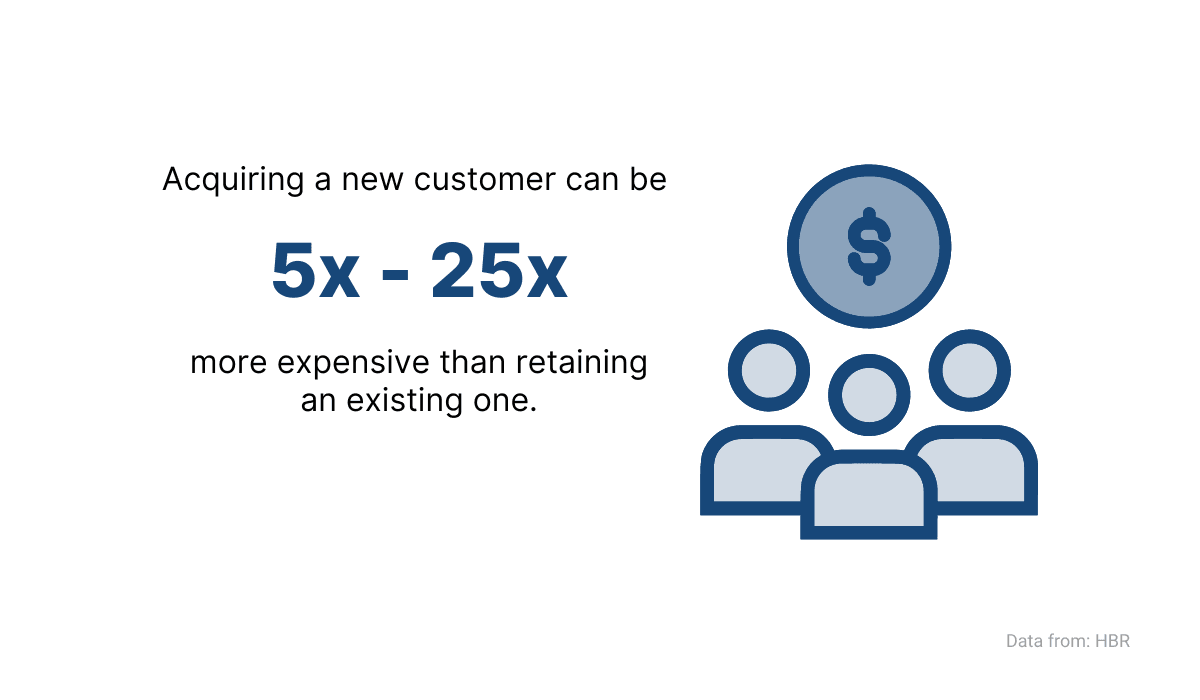
Source: Archbee
So, to keep your users after the onboarding phase, it’s crucial that you keep them engaged.
Don’t assume someone will keep using your product indefinitely just because you onboarded them for a few weeks when they first came to you.
Keeping users interested in your product with new features and regularly reminding them of the benefits they get can significantly impact their loyalty.
Think of onboarding as a process that keeps on going.
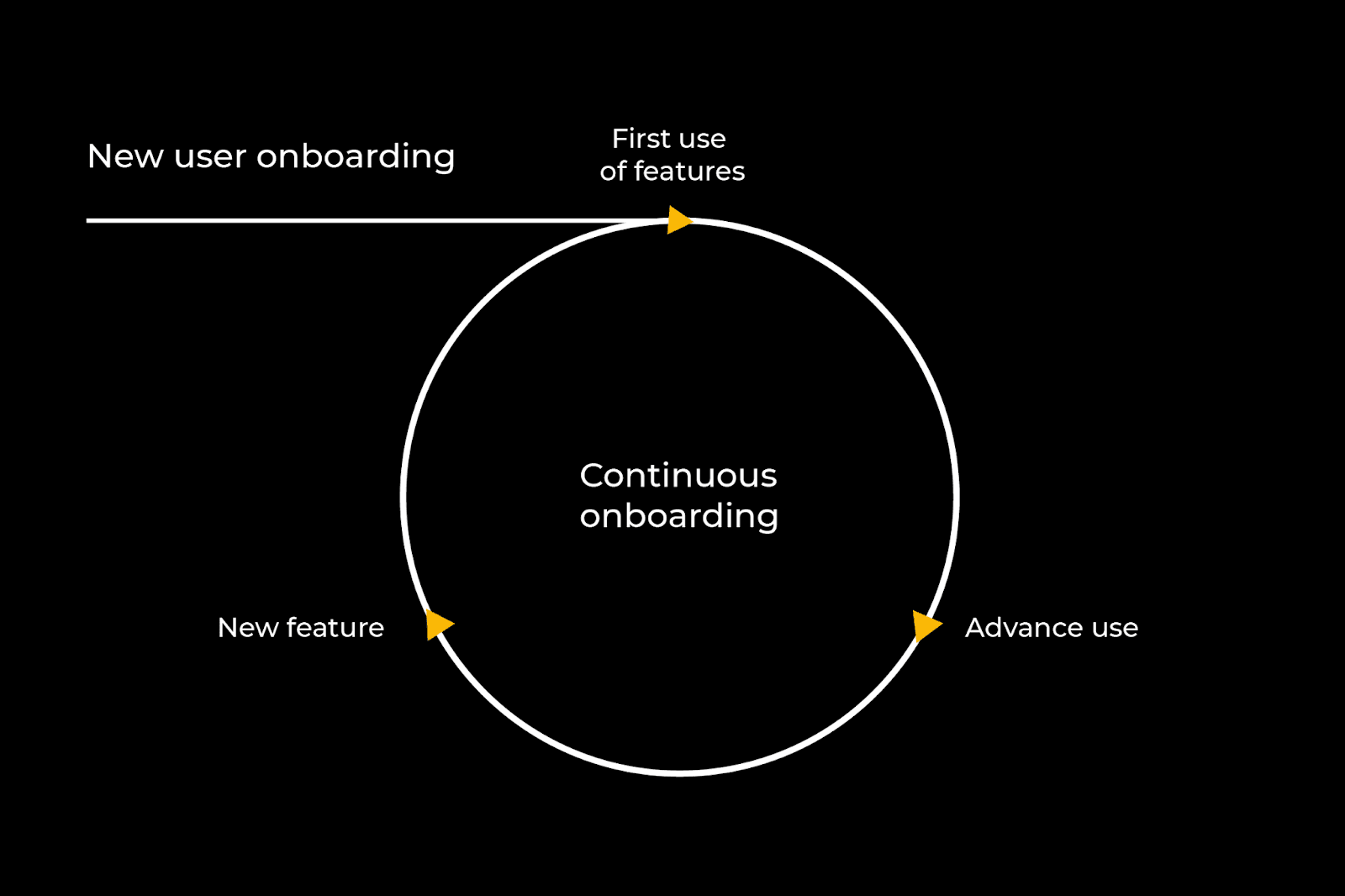
Source: Productled
So, the key to continuously engaging your users is to educate them about your product while it improves and changes.
That way, they can constantly get the most out of it, which helps with user adoption.
You can do that with emails. For instance, Airtable sends emails to its users when they release a new feature.
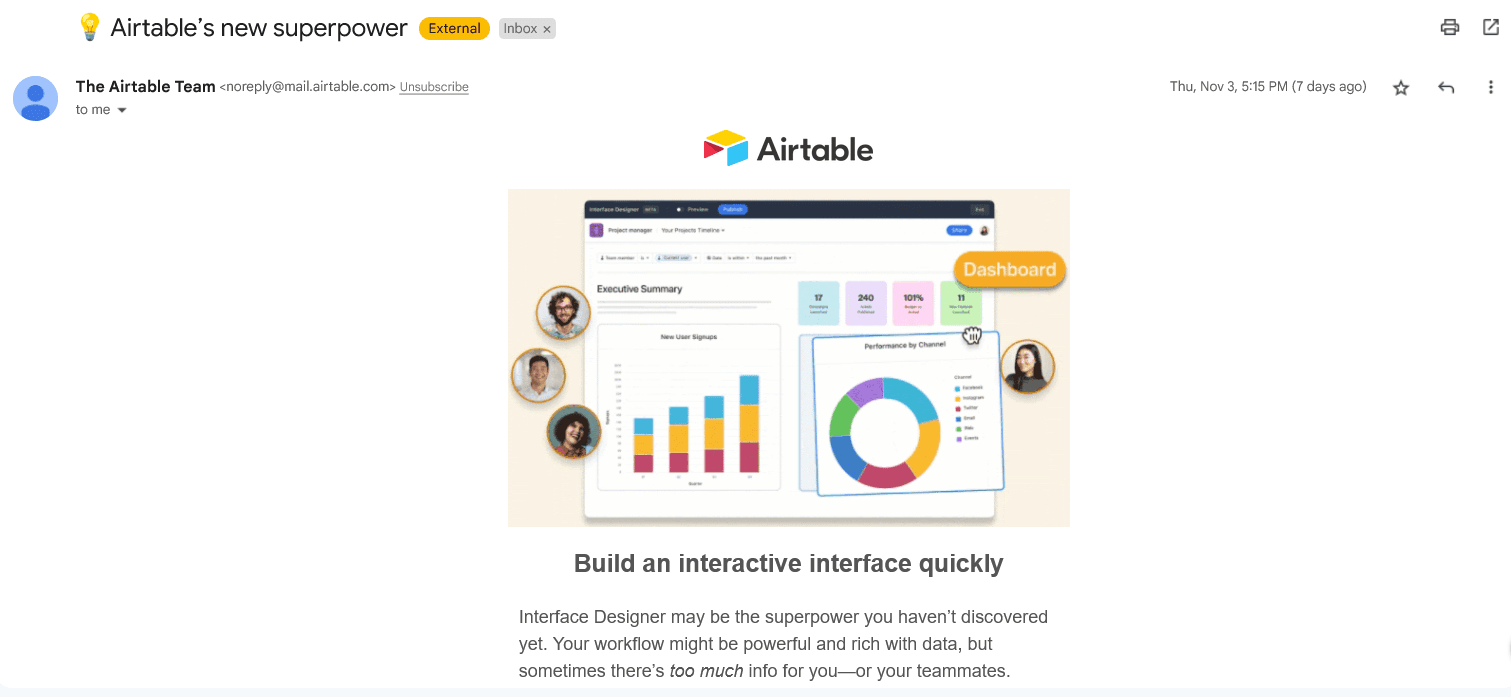
Source: Gmail
It’s a convenient way to keep your users in the loop and show them that the product is evolving and bringing them new value.
You can also have a changelog or release notes on your website where users can track the product changes and new features they can use.
For example, Shopify has a changelog in the form of a timeline.

Source: Shopify
As you can see, every item has a brief description, and if a user clicks on the title, it leads them to an article that has more information about a specific change to the product.
Another great way to keep your users educated on new features is with blog posts.
It’s a versatile method that is great for presenting more information at once.
For instance, Archbee posted a blog post with a roundup of their most notable features released in the past year.

Source: Archbee
Which method, or more of them, you’ll choose is up to your preference.
The important part is that you don’t forget about your user after the initial onboarding. Keeping them engaged is a significant factor in improving user adoption.
Analyze How Your Product Is Used
Understanding how your users interact with your product can be very beneficial for improving user adoption.
You can analyze various elements of product usage, including what features users return to the most or the least, where the friction points are, and even the reasons they do the things they do with your product.
The point is that you use data to discover what you can improve in your product so that you provide a better experience and retain users for longer.
One of the simplest ways to analyze how your product is used is by just asking about it.
You can do that with various questionnaires, surveys, and microsurveys, like the one below.

Source: Hotjar
Microsurveys are much more convenient for implementing in the product than traditional surveys, as they usually have only one or two questions, a rating scale, a yes/no question, etc.
Also, they are context-specific, meaning that they collect feedback about a particular product feature or an action the user performs.
However, while surveys and microsurveys can provide valuable insight from the customers themselves, you can also use tools that help you see how they really use your product and not just how they say they use it.
One of those tools is Mixpanel, which offers many features for product usage analysis.
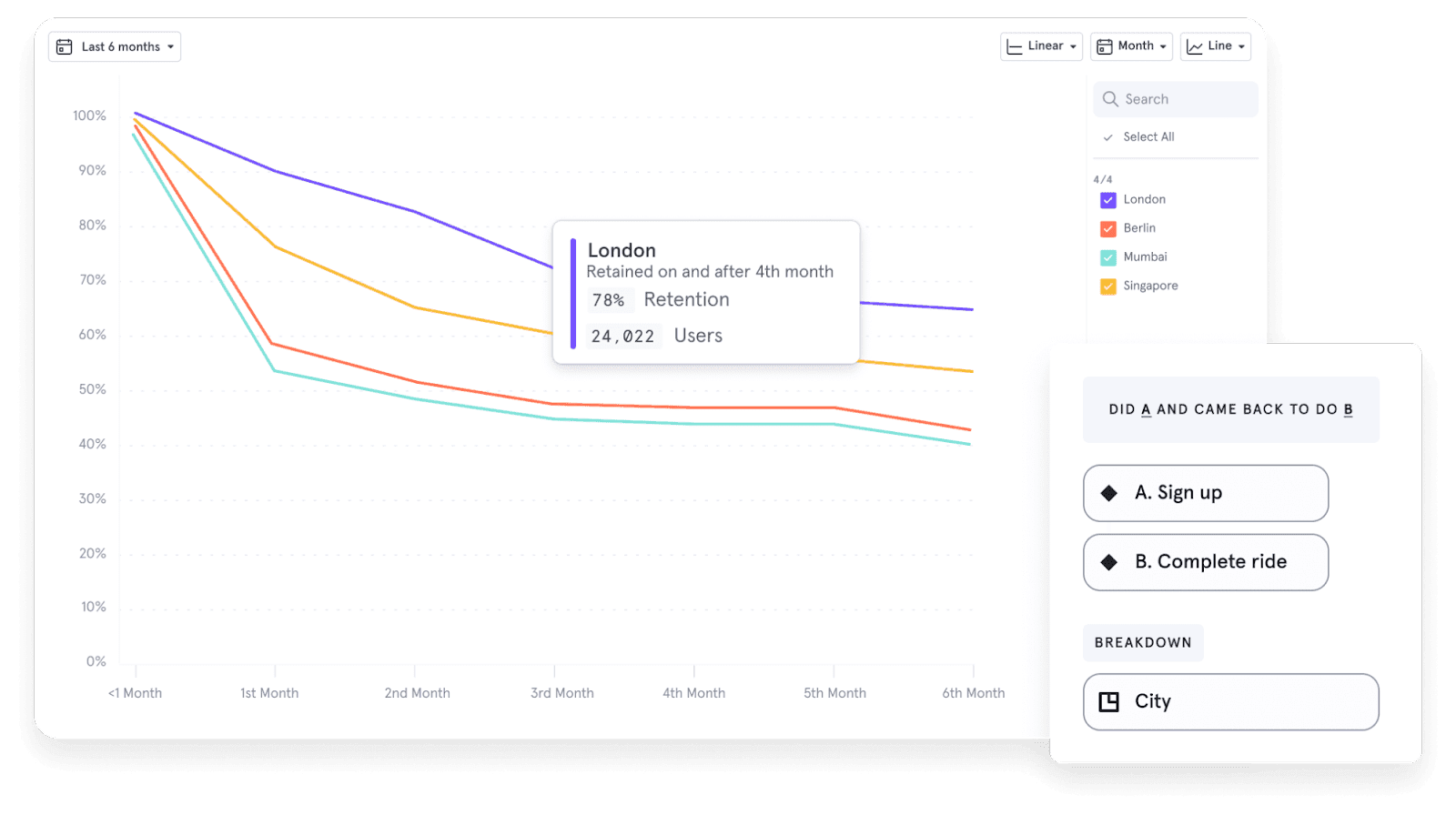
Source: Mixpanel
For example, you can generate interactive reports from the data it collects.
The reports can show how users interact with your product, which features are the most popular, which actions the users perform after sign-up, what their flow through your product looks like and where they get stuck, etc.
For instance, you can see an analysis of users across two different platforms below.
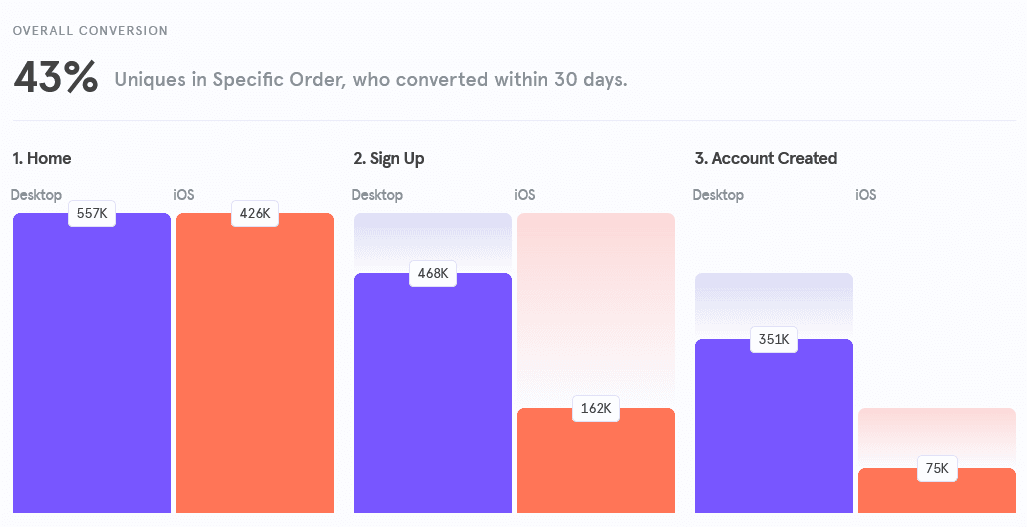
Source: Mixpanel
As you can see, there is a significant difference between desktop and iOS users, as a much smaller number of iOS users end up creating an account.
That sort of insight can be very valuable to companies by showing them where the pain points are for their users.
In short, if you get a deep insight into your users' behavior, you can tweak and improve your product's elements, leading to better user adoption.
Conclusion
For SaaS companies, user adoption is a process that never really ends.
If they want to grow and expand, they need more and more users who’ve made their product an indispensable part of their tech stack.
Those users are a foundation upon which to build. Therefore, with the strategies we’ve discussed in this article, you can make that foundation larger and sturdier.
And the more you employ them, the more you’ll improve your user adoption.
Try Archbee's full range of features with our free 14-day trial.
Frequently Asked Questions
Because in SaaS, revenue and retention only follow when people actually use and get value from your product. Strong adoption turns sign-ups into active users, reduces churn, and creates the foundation for expansion (upsells, cross-sells) and referrals. Since software can be complex, guiding users to value quickly is essential—activation leads to retention, which ultimately drives revenue. Without adoption, marketing spend is wasted and growth stalls.



